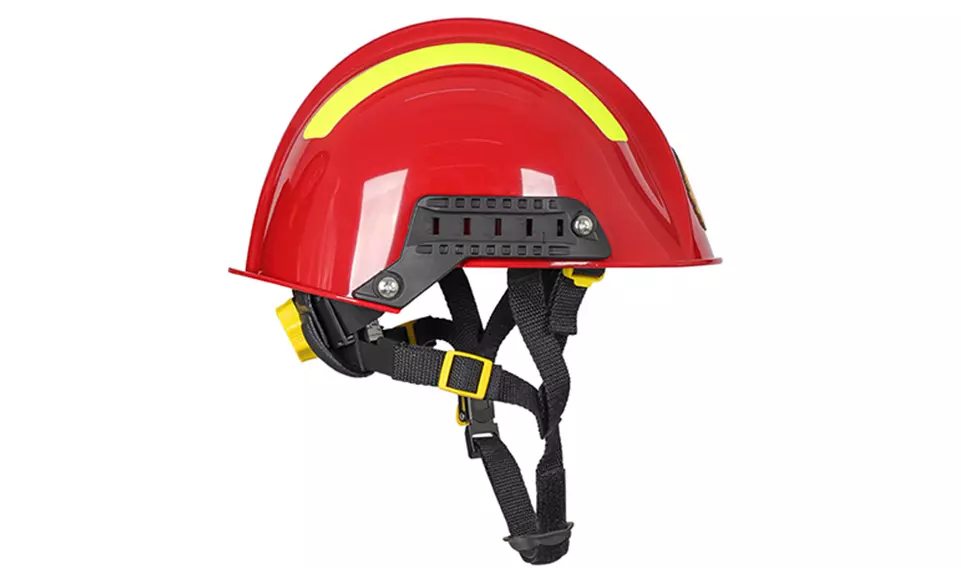
How to choose a firefighter rescue helmet
When choosing a firefighter rescue helmet, multiple factors need to be considered to ensure that it can effectively protect the safety of firefighters in complex and dangerous environments. Here are some key selection points:
1. Compliance with standards and certificationsNational standards and certifications: Ensure that the helmet complies with relevant national or international standards, such as China's 3C certification. These standards specify the requirements for the material, structure, performance, etc. of the helmet, and are an important basis for selecting helmets.
2. Material and structureHood shell material: The hat shell is the main structural part of the helmet and should be made of high-strength, impact-resistant engineering plastics injection molding, such as ABS plastic. These materials can withstand certain impact forces and pressures to protect the head from injury.
Inner lining and buffer layer: The inside of the helmet should be equipped with a buffer layer, such as high-pressure foamed EVA foam cotton, to absorb and disperse impact forces and reduce damage to the head.
Wearing device: The wearing device should be comfortable and stable, including adjustable hat straps and buckles to ensure that the helmet fits the head tightly and is not easy to fall off.
3. Important performanceImpact resistance: The helmet should have good impact resistance and be able to withstand impacts from different directions. When choosing, you can pay attention to the impact absorption performance test data of the helmet, such as the maximum impact force on the head model should not be greater than a certain value (such as 3780N).
Flame resistance and flame resistant performance: Helmets and their accessories (such as chin straps, shawls, etc.) should have certain flame resistance and flame resistant properties to prevent rapid burning in high-temperature environments such as fires.
Penetration resistance: The helmet should have certain penetration resistance to prevent sharp objects from penetrating the helmet and injuring the firefighter's head.
Heat resistance: In high-temperature environments, the helmet should maintain stable performance without deformation, cracking, etc.
Floating performance (for water rescue helmets): For water rescue helmets, their floating performance must also be considered to ensure that the head can float on the water when falling into the water.
4. Additional functions and accessoriesModular design: Some helmets may adopt modular design, which is convenient for replacing and upgrading accessories according to different rescue scenarios, and improving the applicability of the helmet.
Reflective strips and lighting equipment: In order to improve visibility at night or in low-light environments, the helmet can be equipped with 360-degree reflective strips and lighting equipment (such as headlights, flashlights, etc.). Tactical accessories: Water rescue helmets may also be equipped with tactical accessories, such as test lights, goggles, etc., to meet the needs of specific rescue missions.
5. Brand and reputationBrand selection: Give priority to helmets produced by well-known brands and reputable manufacturers, as these products are usually of better quality.
User evaluation: You can refer to the evaluation and usage experience of other firefighters or users to understand the actual performance and comfort of the helmet.
In summary, when choosing a firefighter rescue helmet, you need to consider the above factors comprehensively. By carefully comparing the performance of helmets of different brands and models in terms of material, structure, performance, additional functions, and brand reputation, you can choose the helmet that best suits your needs.












